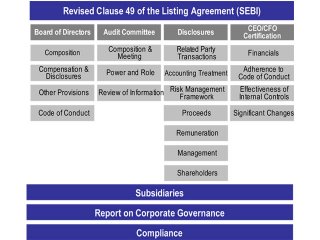Rang De Basanti - A Generation Awakens
This is the first time ever that a movie name has appeared in my blog. Infact this post is dedicated to the movie Rang De Basanti. Rang De Basanti is one movie in recent times after probably Sarkar which I was able to appreciate and like a lot. But at the outset I can make one statement that this movie is not for the masses.
Rang De Basanti, one of the most awaited movie of 2006 was supposed to release on 20th but then as with any other movie this one also ran into some kind of trouble with the Censor board of India and finally got released on the eve of Republic day to packed houses. The movie stars Aamir Khan (DJ), Madhavan(Ajay), Soha Ali Khan (Sonia), Sharman Joshi (Sukhi) , Siddarth (Karan) , Kunal Kapoor (Aslam), Atul Kulkarni (Laxman) and Alice Patten (Sue). The music director needless to say is A R Rahman since we see the songs of the movie topping almost every chart.
The movie starts on a very slow note with the introduction of General Mckinney who felt the threesome Bhagat Singh, Chandrasekhar Azad and RajGuru are different from the masses and starts writing the account of his experiences with them in his diary. His grand daughter who is Sue reads the diary of her grandfather and then decides to make the documentary film over it depicting the national heroes. But she does not get approval for the same from the senior people in the company so she all by herself comes to India where she has Sonia as her friend. They both do good number of auditions for the documentary film but in vain. This is shot in a very nice manner keeping in mind the big number of contests like Indian Idol and others happening over the television now and then. But it so happens that in a party Sue meets the five guys Sukhi, DJ, Karan, Aslam and decide that yes they are the heroes she is looking for her film.
But Sukhi, DJ, Aslam and Karan is one of the modern youngsters brad who believes that India is nothing but a useless country and nothing can be changed in this country even after the best attempts. They believe in living their life to the fullest and do not bother about anything in this world. Aamir Khan once again shines in the role superbly. He has got that terrific knack of posing as a spoiled guy who knows only how to have fun. As he says in one of the dialogues:
" Its been 5 years since I passed out of this University but then I do not want to get out of this place for a simple reason that, here there is some reputation of DJ but outside I would be nothing more than a street dog. "
The character of Karan suits Siddarth very well. He is a silent guy who does not talk a lot in the movie even but his shot at the radio station is amazing. Aslam looks more like a VJ than a Kranthikaari but the role suits him very well. Sukhi essayed by Sharman Joshi is the most energetic character of the movie. It suits Sharman very well and he gets into the shoes of Sukhi and plays the role. His death in the movie makes the mood really sad in the theatre.
These 4 guys are always together in the DU Campus and there is an activist of Swadeshi called as Laxman who is totally opposed to the idea of westernism exhibited by these people. He fights with these people but then it happens that Sue finds an excellent fit in this character and then he enters into the role of one of the freedom fighters. Then the rest of the movie revolves around these five characters together with some of the romance between Madhavan and Soha. After the intermission, the death of Madhavan shooks the five and then their mind starts thinking as to how they can make a difference in the society. The movie ends in a tragic way by the death of all the five people in an encounter. But then this movie gives a really big message to the audience and succeeds in it too.
This movie is different in number of ways. The way it has been shot. The ideal mix of youthful extragavanza and patriotism which no movie has portrayed as of yet. If we look at any of the movies in the past made on the History of India they never involved the youngsters as such. But this movie took a bold step to involve youngsters from present into the past of India and convey the message to the audience. The locales, the picturisation, the back ground score everything in this movie is so well done that one feels that all the strings are perfectly attached. Also this movie is different in a way that it portrays one of the important problem we are facing right now in terms of our defence strength. The MIG. The scandal happening in the area of MIG components is a major blow to the defence department of Indian govt. From the past in which our freedom fighters faced hell and gave us freedom to the present wherein our politicians are playing with our national security and filling up their pockets by way of corruption, the movie portrays it all. The best part of the movie is the time when the DJ and group get the message that they have to do something for their country after the death of Madhavan in a MIG crash.
Rang De Basanti stands out tall among the latest movies which are made on the theme of patriotism and national freedom struggle. Its the same story but presented in a lot different way and its also able to deliver the message across the audience. The music score of A R Rahman is extremely good and complements the movie in all possible ways. The character portrayal and the song sequence together with the selection of places is extremely well done keeping in mind the storyline every moment. The director Rakeysh Omprakash Mehara stands by his fine touch and delivers a masterpiece which the viewers were longing for quite sometime. One of the last dialogue of Aamir Khan is the most heart touching:
"Is duniya mein do tarah ke log rehte hain. Ek jo system ko maante hain aur chahe woh system kitna bhi gandha ho usi ke hisaab se chalte hain. Aur Doosre jo zimmedari lete hain system ko sudharne ki aur use perfect banane ki"
"Har desh perfect nahee hota. Use perfect banana padta hain."
Take my word Rang De Basanti is must watch for just everything it can offer to you.







